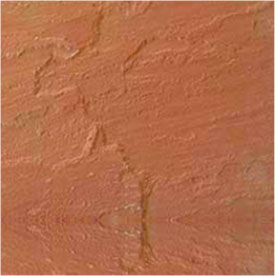Marble Inspection, Packaging and Loading of Marble Tiles at Regatta Universal Exports — A Walkthrough
December 10, 2018 AdminTo ensure the structural and aesthetic integrity of marble tiles until it reaches the buyer, Regatta Universal Exports takes all necessary care during the final steps of marble inspection, packaging, and loading. While marble inspection needs an eye for detail, its packaging requires an utter sense of safety. Similarly, marble loading demands skillful handling. Let’s find out how these three important tasks are performed at Regatta’s very own natural stone factory in Boondi, Rajasthan.
Note: The product showcased in the images is chamfered white marble tiles in a polished finish for one of our valued buyers based out of “country name.” The dimensions of these customized tiles are 61 x 61 x 1.5 cm.
Inspection of Mable Tiles
 This is about checking the quality of marble slab/tile for any structural or aesthetic defect, and whether the product is made according to customers’ specifications in terms of size, design, shade, finish and so on. The following aspects are covered under marble inspection:
This is about checking the quality of marble slab/tile for any structural or aesthetic defect, and whether the product is made according to customers’ specifications in terms of size, design, shade, finish and so on. The following aspects are covered under marble inspection:
- Checking for texture, color, spots, color lines, and grainy/uniform crystal structure.
- Inspection of surface finish — honed, flamed, polished, tumbled, bush-hammered or more.
- Checking for visible defects like scratches, broken edges, cracks, chipping, etching, pinholes, repair marks, swirl marks, etc.
- Looking for other production defects, such as the angle between adjacent edges, and intensity of polish and flatness.
- Checking the length, thickness, and width of the marble tile as per the specification or within the acceptable tolerance along with the diagonal length and angle control.
Packaging of Mable Tiles

This includes packaging of standard and customized marble tiles into strong crates made out of wooden planks that are joined together to form a hollow, box-like structure. Marble tiles are more prone to breakage or other sorts of damage. Hence, individual tiles are first packed into cardboard boxes that are then tightly stacked in large wooden crates. The cardboard containing individual tiles not only provide additional cushioning but prevent friction between marble tiles.
Between the wooden crates and cardboard boxes within, thick sheets of Styrofoam are layered across all sides from the inside. Styrofoam acts as a buffer, thereby offering an extra layer of protection against shocks or jerks during loading/unloading and transportation. Strong wrapping bands are also put around crates to keep everything in place. For waterproofing, wooden crates are finally laminated using thick polythene sheets.
Loading of Mable Tiles
This includes safely loading well-packed wooden crates in container trucks with the help of a crane. The crates are lifted up by the crane and placed in the container trucks with care. Our experienced staff further arranges the crates one by one with utmost caution.
Within the containers too, crates are sensibly placed, so that there is minimal space between any two crates. If there exists any gap, it is properly filled with any cushioning material like thermocol or polystyrene to avoid any collision due to jerk or vibration during transportation to the port.
Takeaway:
All in all, at Regatta Universal Exports, we make all efforts to ensure that our international customers must receive marble or any other natural stone products in the exact shape, size, design, and color as demanded by them. Also, we ascertain at every stage that the stone products remain free from all types of visual or structural flaws before they reach the buyer.
We understand that transparency is the key to our success, and therefore, we keep our buyers updated during all the phases of processing, inspection, packaging, and loading by sharing photographs with them from time to time.
For information about our natural stone products, you can email us at info@reggataexports.com








